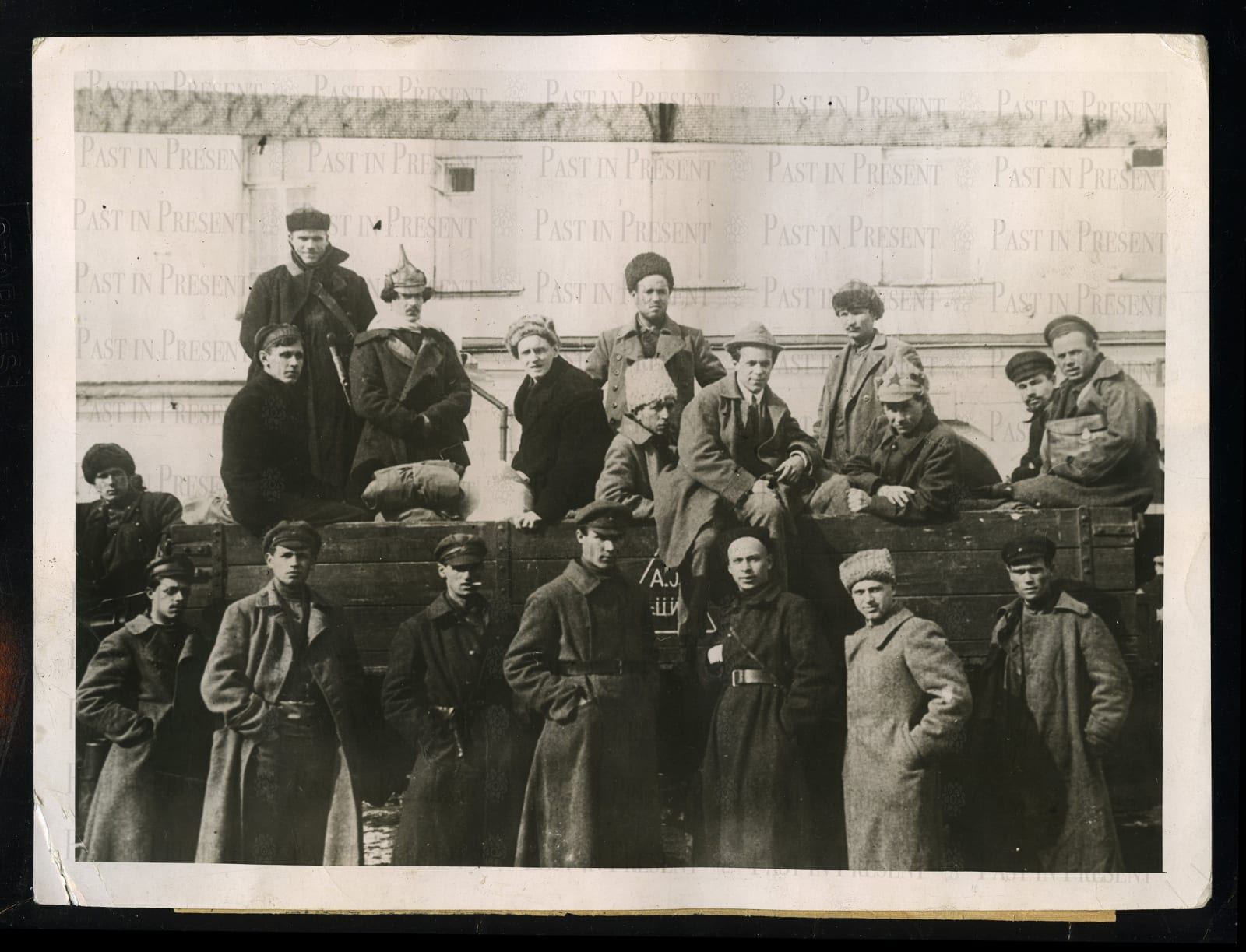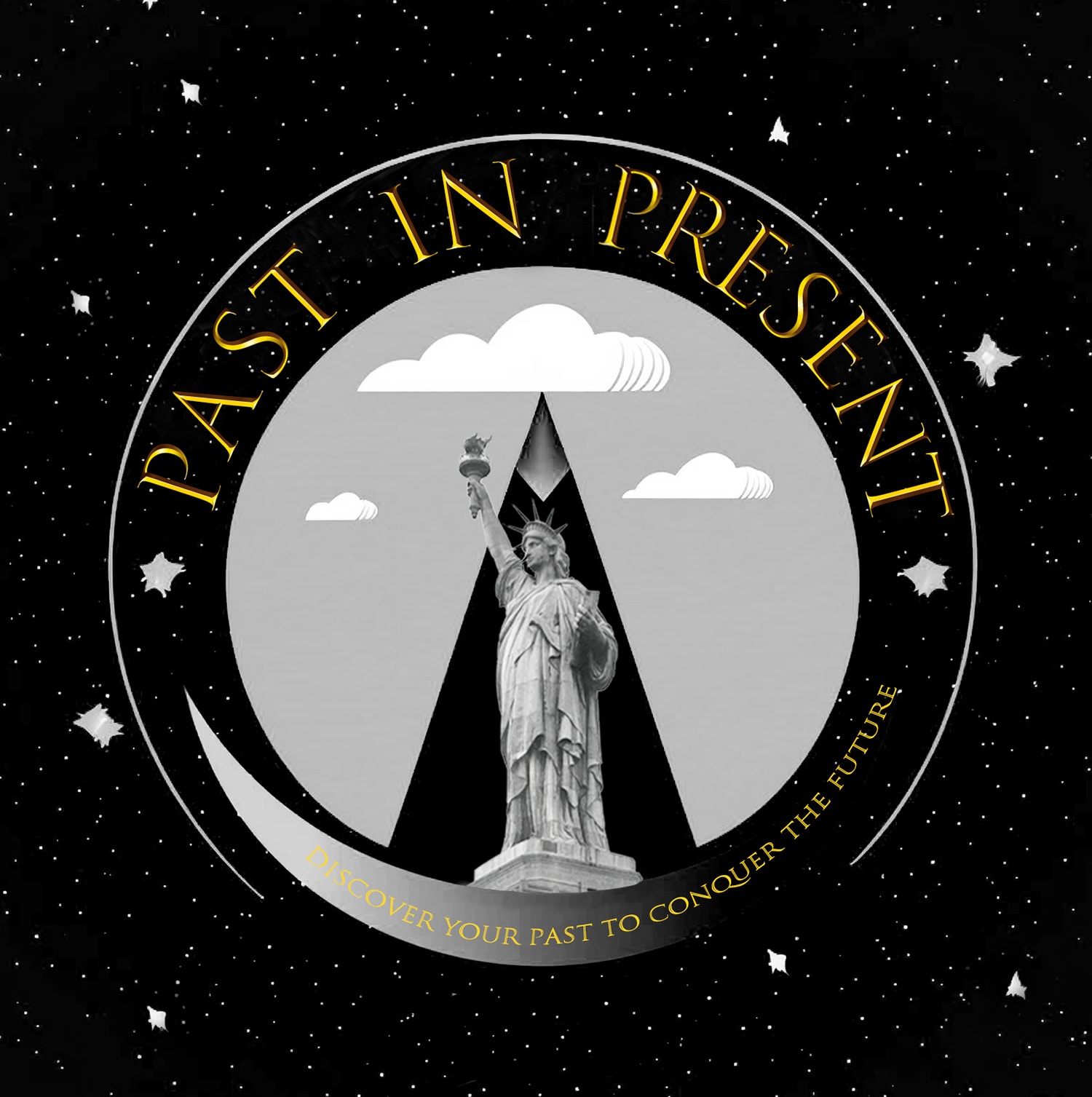 Guards of the Notorious Extraordinary Commission, the terrible inquisition of Russia, Moscow 1921
Guards of the Notorious Extraordinary Commission, the terrible inquisition of Russia, Moscow 1921
 Guards of the Notorious Extraordinary Commission, the terrible inquisition of Russia, Moscow 1921
Guards of the Notorious Extraordinary Commission, the terrible inquisition of Russia, Moscow 1921
Guards of the Notorious Extraordinary Commission, the terrible inquisition of Russia, Moscow, 1921
15.2 x 20.3 cm
Guards of the Notorious Extraordinary Commission, the terrible inquisition of Russia, which Lenine himself fears. The men and women dress alike. This is probably the only picture ever taking of this group.
This is a first newspaper photographs that were taken freely in Soviet Russia. The few that came in the past from the Red stronghold were snapped surreptitiously and smuggled across the border.
The Extraordinary Commission, also known as the “V.Ch.K.” (short for Vserossiyskaya Chrezvychaynaya Komissiya or “All-Russian Extraordinary Commission for Combating Counter-Revolution and Sabotage”), was established on December 20, 1917, under the leadership of Felix Dzerzhinsky. It became one of the most infamous and feared institutions in early Soviet Russia, known primarily for its role in enforcing the Red Terror, a campaign of mass repression carried out by the Bolsheviks during the Russian Civil War.
The Russian Revolution of 1917 and the ensuing Civil War plunged the country into chaos. The Bolsheviks, under Vladimir Lenin, were struggling to consolidate power amidst widespread opposition from both political rivals and foreign intervention. To counter these threats, the Bolsheviks created the V.Ch.K. as a security agency to target and eliminate internal enemies of the revolution. It acted as a secret police force and served as the precursor to later Soviet security services like the NKVD, KGB and the FSB today.
The Red Terror (1918–1922):
The Red Terror refers to a period of political repression, mass executions, and imprisonment carried out by the Bolsheviks and enforced by the V.Ch.K. It was officially declared on September 5, 1918, following the assassination attempt on Lenin by the Socialist Revolutionary Fanny Kaplan. The Terror was a response to widespread opposition, including the threat from the White Armies (anti-Bolshevik forces) during the Russian Civil War, and the potential sabotage of Bolshevik power from within.
Key Components of the Red Terror
1. Mass Executions: The V.Ch.K. carried out executions without trial, targeting “class enemies” such as aristocrats, clergy, business owners, and anyone deemed counter-revolutionary.
2. Imprisonment in Gulags: Many were sent to labor camps, which would later evolve into the notorious Soviet Gulag system.
3. Hostage-Taking: In many cases, hostages were taken from opposition factions or suspected communities and executed as a deterrent.
4. Suppression of Opposition: The V.Ch.K. targeted rival political parties, especially the Socialist Revolutionaries and Mensheviks, and even anarchists.
Key Events:
• Assassination Attempt on Lenin (1918): This event served as a major catalyst for the intensification of the Red Terror. After Lenin was shot by Fanny Kaplan, the Bolsheviks used the incident to justify a broad crackdown on their political enemies.
• Repression of the Kronstadt Rebellion (1921): Although this occurred towards the end of the Red Terror period, the suppression of the Kronstadt sailors, who were once staunch supporters of the Bolsheviks, showcased the V.Ch.K.’s brutal efficiency in maintaining Bolshevik control.
• Uprising Suppression: Throughout the Russian Civil War, the V.Ch.K. played a role in suppressing peasant uprisings and nationalist movements that opposed the Bolsheviks.
Key Figures:
1. Felix Dzerzhinsky – The Polish-born Bolshevik revolutionary who was appointed as the first head of the V.Ch.K. Known for his unrelenting commitment to the Bolshevik cause, Dzerzhinsky earned the nickname “Iron Felix” for his ruthlessness.
2. Vladimir Lenin – Although Lenin feared the radicalism of the V.Ch.K. and its ability to carry out mass repression independently, he recognized its necessity in preserving Bolshevik power.
3. Yakov Peters – A prominent figure in the V.Ch.K., Peters served as Dzerzhinsky’s deputy and was instrumental in organizing mass repression and executions.
4. Genrikh Yagoda – Later became head of the NKVD, Yagoda worked with the V.Ch.K. in its early days before moving on to broader roles in Soviet security.
After the Civil War, the V.Ch.K. was reorganized into the GPU (State Political Directorate) and later became the NKVD, marking the institutional continuity of the secret police in Soviet governance. The legacy of the V.Ch.K. lived on through the Stalinist purges and beyond, symbolizing the pervasive fear and control that defined much of Soviet history
The V.Ch.K. was crucial in establishing and maintaining Bolshevik control during the early years of Soviet Russia. Its use of terror and repression set the tone for the Soviet regime’s use of state violence to suppress dissent. While Lenin feared the inquisition-like nature of the V.Ch.K., he accepted its brutality as a necessary evil for the survival of the revolution. The terror carried out by the V.Ch.K. helped consolidate Bolshevik power and eliminate opposition, but it also laid the groundwork for the broader repressive apparatus that would become a hallmark of the Soviet state throughout its history and still taking place today in Putin’s Russia.






